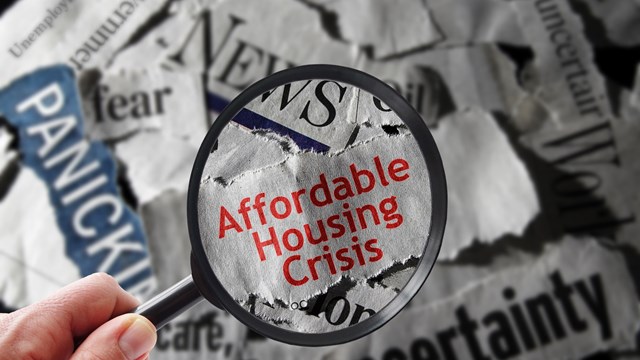Flush into his second term as the city’s chief executive, Mayor Michael R. Bloomberg proposes a $52.7 billion budget plan for 2007 and updated his four-year financial plan for New York City in an attempt to keep the city’s finances on solid ground.
The budget controls costs in the near term providing for surplus funds up to fiscal year 2009. Part of that newfound cash comes from approximately $3.4 billion in FY ’06 resources to help close the budget gap in FY ’07, according to the mayor’s office. The budget also includes $6.5 billion in state funding to cover 50 percent of the city’s five-year capital education plan, and funding is provided to secure health benefits for current and future retirees.
“New York’s economy is growing, our streets are safe and people from around the world are flocking here to visit and live,” said Mayor Bloomberg. “This year’s budget is strong and stable, but long-term financial problems persist and the out-year budget gaps loom large. Now is the time to plan for eventual downturns and to use the extraordinary one-shot revenues to help secure the long-term growth and fiscal stability of the city. This budget includes $2 billion for future health care costs and uses surpluses for pay-as-you-go capital and debt relief. Today’s investment in our city’s future will not only soften the blow from the invariable downturn in the city’s economy, but ensure that New York continues to grow and prosper.”
IBO Analysis
The Independent Budget Office (IBO), a bipartisan agency that analyzes the city’s financial health, cites the mayor’s consistency. The executive budget plan and four-
year financial plan, says IBO director Ronnie Lowenstein, “follows much the same pattern as his other recent budget plans: There is a swell of unanticipated tax revenues that create a large surplus in the current fiscal year, followed by expectations of steep shortfalls in the future.”
Accordingly, says Lowenstein, the mayor projects increased surpluses—$185 million in 2006, for example, all while the anticipated budget gap grows by $702 million in 2009. IBO’s estimates of a budget gap, however, are not as steep as even the mayor projects, says Lowenstein. IBO’s estimated 2008 budget gap is $1.1 billion less than the mayor’s, and lower by similar amounts in 2009 and 2010. This is largely because of substantially higher expectations of out-year property tax revenue as well as higher projections for personal and business income tax receipts, and lower estimates of Medicaid spending.”
Increased revenues are fueled by the city’s property tax collection efforts. With the revised numbers, revenue is now projected to grow by 8.9 percent over 2005, according to Lowenstein. But by next year, though, tax revenues are expected to drop off, and one reason given is a slower housing market and leveling off of sales prices.
‘As a result, the real estate transfer taxes generated by the sale and financing of real property are expected to fall by $804 million from 2006 to 2007 (a decline of 31 percent). Despite the precipitous decline, revenues from these taxes are still projected to exceed the totals for every year prior to 2005 and to be roughly twice the levels prevailing at the start of this decade,” says IBO’s report.
A Rosier Economic Outlook
Although facing the prospect of future shortfalls, New York City’s economy is strong in the short-term and jobs are being created throughout the city, the mayor says. Another plus is that unemployment is at 5.3 percent, its lowest level since March 2001.
The commercial real estate market also remains strong, vacancy rates continue to decline, and New York City’s tourism sector is thriving with record numbers of tourists visiting the Big Apple. Hotel room occupancy and room rates are reaching historic levels. Some analysts, however, believe that a cooling economy lies ahead. Wall Street bonuses continue to grow but the rate of increase is down sharply. Fourth quarter Wall Street profits were recently revised downward from $11.8 billion to $9.4 billion. National and local data also shows a modest slowdown in real estate transactions and value. Real estate transaction taxes, which have boosted the city’s coffers in the past, are lower, but the mortgage recording tax continues to outpace expectations, possibly due to refinancing and rising interest rates, according to the mayor.
City Council Speaker Christine Quinn and the leadership offered their own budget message and recommendations. The council has to finalize the budget plan before they adjourn for the summer. “Over the last four years, the city has recovered from one of the most difficult times in its history. It has come through a fiscal crisis brought on by the worst single foreign attack ever on American soil, followed by a serious economic downturn. The city struggled through these years, having to cut services and raise taxes to close large budget gaps. Having endured these difficult times, it is now time to look beyond the current and ensuing fiscal year and plan for the future of our great city,” the council notes in its executive summary.
One of the goals of the council is to insert transparency into the system and do an overall reform of the entire budget process.
“This response calls on the administration to work with the council to begin to reform the budget process. Agency budgets should be reviewed to develop programmatic units of appropriation that detail the objectives sought to be achieved by the programs or agency activities. Standards should be developed by which to measure the value and progress of capital projects and the capital budget should contain sufficient information to allow the public and the council to understand the projects being undertaken as well as to judge the extent to which the projects are helping the city attain its medium and long-term planning goals,” says the council. “This would allow the public and the council to focus on budgetary priorities and long-term planning for the city, rather than on the steps in the dance. The task of reform goes hand-in-hand with a longer-term view of budget priorities. The council must focus on the long-term education, health, and welfare of our city.”
Funding for Housing
The FY ’07 executive budget allots nearly $489 million in total funding for the Department of Housing Preservation and Development (HPD), which is slightly less than the amount the agency received in fiscal year 2006. Besides administrative and other costs, the housing budget includes funding for the Mayor’s New Housing Marketplace Initiative. In February, Mayor Bloomberg announced an extension of his housing plan through the year 2013. The plan, first introduced in 2002, called for creating or preserving approximately 68,000 units of housing between FY ’04 and FY ’08. The mayor’s extended plan attempts to complete approximately 165,000 housing units during the life of the 10-year program. Towards that purpose, $7.5 billion is proposed, originating from Housing Development Corporation (HDC) reserves, a mix of non-city sources, the citywide Affordable Housing Fund, and outlay from the capital budget.
Closing the Gap
The mayor uses one-time resources to reduce long-term costs and to establish a $2 billion trust fund to pay for future health benefits and pensions. Some of the other program highlights include $21 million in FY ’07 to hire 800 new police officers and 400 civilians at the NYPD; $100 million in FY ’06 to close an operating deficit at the New York City Housing Authority; and $15 million in FY ’06 and ’07 to increase security at the Staten Island Ferry and for other transportation needs. Significant budget gaps though remain. Out-year budget gaps rise to nearly $3.6 billion in 2008 and $4.2 billion in 2009 largely driven by the growth in non-discretionary spending, the budget report says.
Additionally, pension and fringe benefits now consume more than 62 percent of the total salaries for municipal employees. Non-discretionary spending on employee related costs, Medicaid and debt service all contribute significantly to the long-range shortfalls. And without long-term solutions to these problems, the city most likely will be plagued by a continuous boom-bust cycle that in the past has caused painful budget cuts and tax increases.
New York State is also chipping in funding to refurbish New York City schools. The state has agreed to 50 percent share of the city’s $13.1 billion five–year school capital construction plan. The state’s total contribution will help provide 107 new schools, creating 66,000 additional seats and 50 new partnerships with charter schools. In addition, the plan will make available $2.5 billion for capital improvements and repairs, $2.1 billion for technology, school safety, science lab and auditorium upgrades, plus additional funding to assist with code compliance and emergency lighting.
Capital Planning Over the Next Four Years
The city’s Four-Year Capital Plan invests more than $36.5 billion in infrastructure improvements. A total of $10.5 billion, or 29 percent, is invested in New York City schools. Additionally, more than $3 billion is provided for the Hudson Yards redevelopment of the West Side of Manhattan, including the extension of the Number 7 train and development of new parks. Another $1.3 billion is allotted for street resurfacing and reconstruction. The Croton Water Filtration Facility receives $1.1 billion in funding and Bronx Park Development receives $198 million; $308 million is used to renovate firehouses and EMS stations and $187 million is used to construct and renovate police precincts. The city is promising $149 million for Yankee Stadium infrastructure, $136 million for Fresh Kills Park redevelopment, $107 million for the Atlantic Yards Project, and $105 million for the Mets’ Shea Stadium infrastructure and parks. The city also plans to fund $99 million in acquisition, remediation and construction of over 30 acres of open space along the Greenpoint-Williamsburg waterfront. Randall’s Island receives $82 million for sports fields and infrastructure and $70 million is pledged to fund the High Line Park, and $51 million is dedicated to Brooklyn Bridge Park improvements.
Debra A. Estock is managing editor of The Cooperator.







Leave a Comment